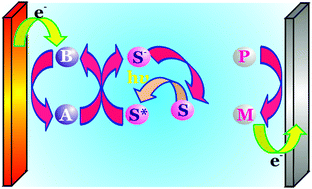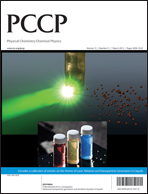A mathematical model for a photosynthesis-inspired regenerative photogalvanic device, for transient rather than exclusively steady-state conditions, based on molecular electrochemistry rather than electron transfer processes involving semiconductors, is considered within this work and which is adapted from an experimental system previously developed (J. E. Halls and J. D. Wadhawan, Energy Environ. Sci., 2012, 5, 6541). Computational simulations suggest that pragmatically achievable systems behave as middle-of-the-range photo-rechargeable electrochemical capacitors for light-to-electrical energy storage; in contrast the system performance as a light-to-electrical energy convertor (viz., solar cell), for cells constructed from electrochemically reversible redox couples with fast photo-induced electron transfer reactions is critically dependent on the concentration of the supersensitiser; maximum power conversion efficiency of ca. 6.5% under 500 nm light, 2.4 mW cm−2 intensity for typical experimental parameters, neglecting Ohmic losses, and employing galvanostatic discharge, with a power conversion efficiency that is capable of being increased by a factor of five (to ca. 34%) when the supersensitizer concentration increases by an order of magnitude (from 5.0 to 50.0 mM). Under an AM 2.0 solar spectrum, numerical simulations suggest that one potentially pragmatically achievable embodiment of this regenerative system is able to perform with a solar-to-electrical power conversion efficiency of 4.5% – an attractive realistic single cell value.

You have access to this article
 Please wait while we load your content...
Something went wrong. Try again?
Please wait while we load your content...
Something went wrong. Try again?


 Please wait while we load your content...
Please wait while we load your content...